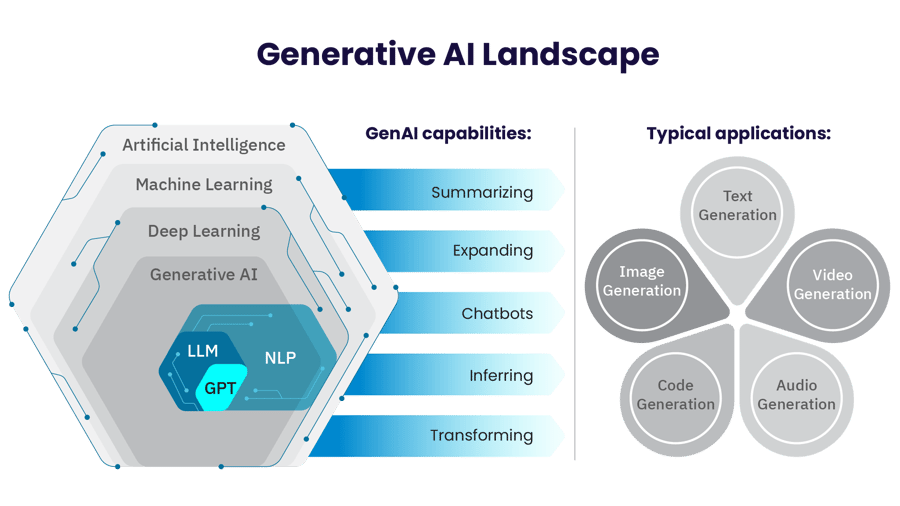All Categories
Featured
Table of Contents
Such designs are trained, using millions of instances, to predict whether a particular X-ray shows signs of a lump or if a specific borrower is most likely to fail on a funding. Generative AI can be considered a machine-learning version that is educated to produce brand-new information, instead than making a forecast regarding a particular dataset.
"When it pertains to the actual equipment underlying generative AI and various other sorts of AI, the differences can be a bit blurred. Oftentimes, the same algorithms can be made use of for both," says Phillip Isola, an associate teacher of electric design and computer technology at MIT, and a member of the Computer Science and Artificial Intelligence Laboratory (CSAIL).

However one large difference is that ChatGPT is far larger and much more intricate, with billions of criteria. And it has actually been trained on a massive quantity of information in this case, a lot of the openly available text on the web. In this substantial corpus of text, words and sentences appear in sequences with particular dependencies.
It discovers the patterns of these blocks of text and utilizes this knowledge to recommend what may come next off. While bigger datasets are one driver that brought about the generative AI boom, a selection of significant research study advancements also caused more complex deep-learning designs. In 2014, a machine-learning style referred to as a generative adversarial network (GAN) was proposed by researchers at the College of Montreal.
The generator attempts to trick the discriminator, and while doing so discovers to make more sensible outputs. The photo generator StyleGAN is based on these kinds of versions. Diffusion versions were presented a year later by scientists at Stanford University and the College of California at Berkeley. By iteratively refining their outcome, these models find out to generate new data samples that look like examples in a training dataset, and have been used to create realistic-looking pictures.
These are just a couple of of several approaches that can be made use of for generative AI. What every one of these approaches have in common is that they convert inputs into a collection of symbols, which are mathematical depictions of pieces of information. As long as your information can be exchanged this criterion, token style, after that in concept, you can use these approaches to create brand-new information that look comparable.
What Is Machine Learning?
Yet while generative models can achieve amazing results, they aren't the very best selection for all types of data. For tasks that entail making predictions on organized information, like the tabular information in a spread sheet, generative AI designs tend to be surpassed by traditional machine-learning methods, claims Devavrat Shah, the Andrew and Erna Viterbi Professor in Electric Engineering and Computer Technology at MIT and a participant of IDSS and of the Lab for Information and Choice Solutions.

Previously, people had to talk to equipments in the language of devices to make things occur (Evolution of AI). Currently, this interface has determined how to speak to both people and equipments," says Shah. Generative AI chatbots are currently being made use of in call facilities to field inquiries from human consumers, but this application highlights one potential red flag of applying these versions employee variation
Explainable Machine Learning
One encouraging future direction Isola sees for generative AI is its use for fabrication. Rather than having a model make a photo of a chair, probably it might produce a strategy for a chair that might be generated. He also sees future uses for generative AI systems in creating a lot more normally smart AI agents.
We have the ability to think and fantasize in our heads, ahead up with interesting ideas or plans, and I believe generative AI is among the devices that will encourage representatives to do that, too," Isola states.
Ai Chatbots
Two added recent breakthroughs that will certainly be talked about in even more information listed below have actually played an essential part in generative AI going mainstream: transformers and the innovation language models they enabled. Transformers are a kind of artificial intelligence that made it possible for scientists to train ever-larger designs without having to identify every one of the data beforehand.

This is the basis for devices like Dall-E that instantly produce photos from a text summary or create message captions from pictures. These developments notwithstanding, we are still in the early days of making use of generative AI to create legible text and photorealistic elegant graphics. Early applications have actually had problems with precision and prejudice, as well as being vulnerable to hallucinations and spewing back odd solutions.
Going ahead, this technology can assist create code, layout new medicines, develop items, redesign business procedures and change supply chains. Generative AI begins with a prompt that could be in the form of a text, an image, a video, a style, music notes, or any kind of input that the AI system can process.
After a preliminary response, you can additionally personalize the outcomes with responses about the style, tone and various other elements you desire the produced web content to mirror. Generative AI versions combine various AI algorithms to stand for and process web content. To produce text, numerous all-natural language handling techniques transform raw personalities (e.g., letters, punctuation and words) right into sentences, parts of speech, entities and activities, which are stood for as vectors utilizing numerous inscribing strategies. Scientists have been creating AI and various other tools for programmatically generating content because the very early days of AI. The earliest techniques, called rule-based systems and later on as "expert systems," made use of clearly crafted policies for generating responses or data sets. Neural networks, which develop the basis of much of the AI and maker knowing applications today, flipped the problem around.
Established in the 1950s and 1960s, the initial semantic networks were limited by a lack of computational power and tiny information collections. It was not up until the development of huge data in the mid-2000s and enhancements in computer hardware that semantic networks ended up being functional for producing web content. The field increased when researchers found a method to get neural networks to run in parallel throughout the graphics processing systems (GPUs) that were being utilized in the computer system video gaming market to make video games.
ChatGPT, Dall-E and Gemini (previously Poet) are preferred generative AI user interfaces. In this situation, it attaches the definition of words to aesthetic aspects.
Ai Innovation Hubs
It enables users to produce imagery in numerous styles driven by customer motivates. ChatGPT. The AI-powered chatbot that took the world by tornado in November 2022 was built on OpenAI's GPT-3.5 implementation.
Latest Posts
What Is Machine Learning?
Artificial Neural Networks
How Does Ai Personalize Online Experiences?